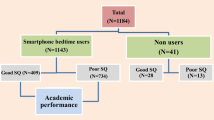Abstract
Sleep is a very significant biological function for the human being and is important to have a physical balance and a proper regime for a decent quality of life. It is very important to monitor sleep and quality of sleep, especially to older adults because they spend more time in bed compared to younger adults. Insufficient sleep for older adults might cause depression, attention and memory problems, excessive daytime sleepiness, and experience more nighttime falls. The current sleep assessments and evaluation methods are troublesome, expensive, and time-consuming. Thus, the healthcare community is seeking inexpensive and mobile devices that can support a long-term data collection and be accessible to most of the people. This is where a massive use of Internet of Things devices (wearables, low-energy sensors, beacons, apps) is playing a major shift in the quality of life of the population. This paper presents a summary of the current nonintrusive sleep tracking technologies (these include but not limited to consumer sleep trackers e.g., wearables such as bracelets; smart-watches, Mobile Apps and non-wearables such as sleep-tracking mats that can be placed under a bed mattress) and their suitability for the elderly.



Similar content being viewed by others
Notes
Product website: https://www.emfitqs.com/
Product website: https://www.beddit.com/
Product website: https://www.earlysense.com/
Product website: https://support.health.nokia.com/
Product website: http://bamlabs.com/
Product website: http://www.sleepace.com/
References
Abdel-Basset M, Manogaran G, Mohamed M. Internet of things (iot) and its impact on supply chain: A framework for building smart, secure and efficient systems. Futur Gener Comput Syst 2018;86:614–628. https://doi.org/10.1016/j.future.2018.04.051. http://www.sciencedirect.com/science/article/pii/S0167739X1830400X.
Abdel-Basset M, Manogaran G, Mohamed M, Rushdy E. Internet of things in smart education environment: Supportive framework in the decision-making process. Concurrency and Computation: Practice and Experience 2018;0(0):e4515. https://doi.org/10.1002/cpe.4515. https://onlinelibrary.wiley.com/doi/abs/10.1002/cpe.4515, e4515 cpe.4515.
Davidovich MLY, Karasik R, Tal A, Shinar Z. 2016. Sleep apnea screening with a contact-free under-the-mattress sensor. In: 2016 Computing in Cardiology Conference (CinC), pp 849–852. https://doi.org/10.23919/CIC.2016.7868876.
Dimitrov D V. Medical internet of things and big data in healthcare. Healthcare Informatics Research 2016;22 (3):156–163.
Islam S M R, Kwak D, Kabir M H, Hossain M, Kwak K S. The internet of things for health care: a comprehensive survey. IEEE Access 2015;3:678–708. https://doi.org/10.1109/ACCESS.2015.2437951.
Jeon L, Finkelstein J. Consumer sleep tracking devices: a critical review. Digital Healthcare Empowering Europeans: Proceedings of MIE2015 2015;210:458.
Kelly JM, Strecker RE, Bianchi MT. Recent developments in home sleep-monitoring devices. ISRN Neurol 2012;2012(768794):10. https://doi.org/10.5402/2012/768794.
Kolla BP, Mansukhani S, Mansukhani MP. Consumer sleep tracking devices: a review of mechanisms, validity and utility. Expert Rev Med Devices 2016;13(5):497–506. https://doi.org/10.1586/17434440.2016.1171708. pMID: 27043070.
Kouroupetroglou C. Health and human services. Enhancing the Human Experience Through Assistive Technologies and e-accessibility. Hershey: IGI Global; 2014. p. Chap 6, 79–111. https://doi.org/10.4018/978-1-4666-6130-1.ch006.
Niewolny D. 2013. How the internet of things is revolutionizing healthcare. Healthcare Segment Manager, Freescale Semiconductor. freescale.com/healthcare.
Ong AA, Gillespie MB. Overview of smartphone applications for sleep analysis. World Journal of Otorhinolaryngology-Head and Neck Surgery 2016;2(1):45–49. https://doi.org/10.1016/j.wjorl.2016.02.001. http://www.sciencedirect.com/science/article/pii/S2095881115300184.
Russo K, Goparaju B, Bianchi M T. Consumer sleep monitors: is there a baby in the bathwater? Nature and Science of Sleep 2015;7:147.
Sadek I, Mohktari M. Nonintrusive remote monitoring of sleep in home-based situation. J Med Syst 2018; 42(4):64. https://doi.org/10.1007/s10916-018-0917-6.
Sadek I, Seet E, Biswas J, Abdulrazak B, Mokhtari M. Nonintrusive vital signs monitoring for sleep apnea patients: a preliminary study. IEEE Access 2018;6:2506–2514. https://doi.org/10.1109/ACCESS.2017.2783939.
Tal A, Shinar Z, Shaki D, Codish S, Goldbart A. Validation of contact-free sleep monitoring device with comparison to polysomnography. J Clin Sleep Med 2017;13(3):517–522.
de Zambotti M, Rosas L, Colrain IM, Baker FC. The sleep of the ring: Comparison of the \(\bar {O}\)ura sleep tracker against polysomnography. Behav Sleep Med 2017;0(0):1–15. https://doi.org/10.1080/15402002.2017.1300587, pMID: 28323455.
Zaunseder S, Henning A, Wedekind D, Trumpp A, Malberg H. Unobtrusive acquisition of cardiorespiratory signals. Somnologie 2017;21(2):93–100. https://doi.org/10.1007/s11818-017-0112-x.
Author information
Authors and Affiliations
Corresponding author
Ethics declarations
Conflict of interests
The authors declare that they have no conflict of interest.
Additional information
Ethical Approval
This article does not contain any studies with human participants performed by any of the authors.
Publisher’s note
Springer Nature remains neutral with regard to jurisdictional claims in published maps and institutional affiliations.
This article is part of the Topical Collection on Internet Of Medical Things In E-Health
Rights and permissions
About this article
Cite this article
Sadek, I., Demarasse, A. & Mokhtari, M. Internet of things for sleep tracking: wearables vs. nonwearables. Health Technol. 10, 333–340 (2020). https://doi.org/10.1007/s12553-019-00318-3
Received:
Accepted:
Published:
Issue Date:
DOI: https://doi.org/10.1007/s12553-019-00318-3




